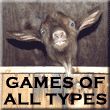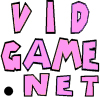 |
Map : News : Updated Links : Links : Mission Statement : Contact : Thanks : Works Cited : Power Supply Reference : Room of Doom : Movies : Books : Game Memorabilia : Cleaning : Auctions 3DO : Arcade : Atari : Bandai : CD-I : Channel F : Clones : Coleco : Commodore : Cybiko : Gamepark : Handhelds : Jakks Pacific : Magnavox : Mattel : Microsoft : Milton Bradley : NEC : Nintendo : Nokia : PONG : RCA : Sears : Sega : SNK : Sony : Tapwave : Texas Instruments : Tiger : Tiger Telematics : Timex : VIS : V-Tech : Worlds Of Wonder |

Nintendo Game Boy Color (CGB-001)
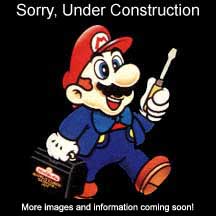
In March 1998 Nintendo had a plan to come up with a full color Game Boy unit and finally delivered this plan in the form of the 8 bit Game Boy Color (GBC) in November of 1998 (October, Japan). The price it debuted at was $79.99 USD, but quickly dropped to $69.99 USD after the holiday season. In that price, the system came with two AA batteries which the system could run on for up to 13 hours on average. When replaced, the battery indicator on the front of the GBC glows bright red and with use dims slowly as the batteries are used. While the GBC retains a reflective LCD screen and is not backlit, it does boast backwards compatibility. This simply means that one would be able to play most of the previously released games for the Game Boy and the new games for Game Boy Color. The GBC has come in six different standard colors: Dandelion Yellow, Berry Pink, Kiwi Green, Grape Purple, Teal, and Atomic Purple (see through). Atomic Purple and Grape were intially released in 1998, while the other four colors were released in 1999. These colors have been around since the system debuted. Other special runs of the GBC include the Pokemon Special 1: a yellow and blue GBC ornated with Pokemons on it (see above & below), it retailed for $109.99 USD. The Pokemon Special 2: Gold faded to Silver GBC that was ornated with Pokemons from the Gold and Silver edition game packs, it retailed for $99.99 USD. When Pokemon Crystal was released in the summer of 2001 a Kiwi GBC was packaged along with it for $79.99 USD. The game pack could also be purchased alone for $29.99 USD. On an average, game packs cost anywhere from $29.99 -$34.99 USD. Some like Microsoft's Puzzled only retailed for $9.99 USD. The release of the Game Boy Color also sparked re-releases of certain games including Legend of Zelda: Link's Awakening. These 'new' titles often were followed by the letters DX, which stood for Deluxe, hinting that there may be some improvements. In Zelda, players are treated to a new dungeon. In Super Mario DX players are treated to the REAL Super Mario Brothers 2, which is the Lost Levels on the Super Nintendo Entertainment System cartridge Super Mario All Stars.
There may be some worry with new systems and the LCD display screen. I was worried the first time I shut off my Game Boy Color that the screen was damaged, because the rows of pixels showed briefly. This is not the case: with time and as the pixels get used, the fading will occur at a more rapid pace. When the screen is fresh and the system is new, the pixels will take longer to fade. Another interesting note of the GBC is the changing of the palettes. Think of it similar to the palettes of the Super Game Boy (if you've used one). By pressing any direction of the D-pad and either the A or B button when the Game Boy Color title screen appears, you can change the color of the regular Game Boy (ex. Super Mario Land) to any one of 13 different color palettes. Try experimenting and seeing which ones are right for you.
The infrared ports, located at the top of the Game Boy Color are used for only a few things. Of the most notable are communicating with other GBCs (only, not Game Boy or Game Boy Pocket) and communicating with the Pocket Pikachu 2. To communicate with other GBCs you must be out of direct sunlight and away from other infrared interference and within 1.5"-2" of the other GBC. You can go 'link-less' and play others with use of the infrared port, but the game pack you are playing must work with the infrared function (most GBC only games support this). Bomberman Max games are one example.
- CPU: Custom Z80 @ 8MHz
- RAM: 32KB (carts 128KB)
- ROM: 64MB
- Max Colors on screen: 10, 32, or 56 (32,000 palette)
- Max Sprites: 40, 10 per scanline
- Screen Resolution: 160x144x56
- Sound Channels: 4 PSG
To see the different software available for this system, please click here.
| Back of the Game Boy Color showing the Cartridge slot and battery compartment. AAx2 | |
|
Right side of the Game Boy Color: 1. On/Off Switch |
|
|
Left side of the Game Boy Color: 1. Link/Expansion Bay |
|
|
Top of the Game Boy Color: 1. Infared Port |
|
|
Bottom of the Game Boy Color: 1. Power Output |
|
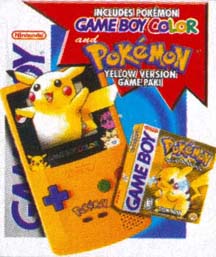 |
$109.99 Special Pokemon Edition GBC with the Pokemon Yellow game packed in. |
 |
$57.50 with $50 purchase of Tommy Hilfiger clothing for kids. Available in 2000. Isn't this sick? |
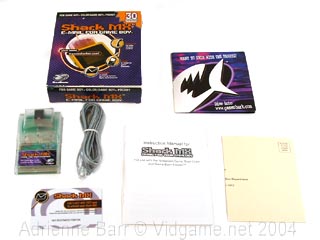 |
Shark MX E-mail kit by Interact for Game Boy Color. Comes with 30 minute access card, phone cord, and modem/cartridge. 1-24803 |
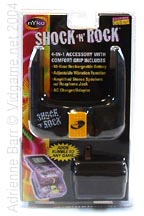 |
Nyko's Shock 'N' Rock |
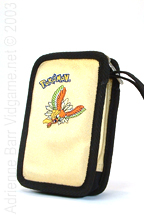 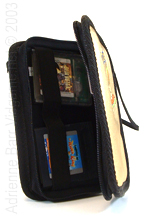 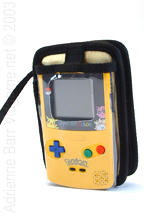 |
Sample of a Game Boy Color carry case. |
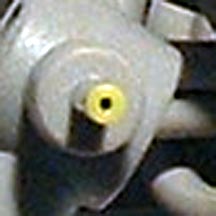 |
Sample tip for GBC PSU. (not required if using batteries) Input: AC 120V 60Hz 4W (0.6W) - @ + |
